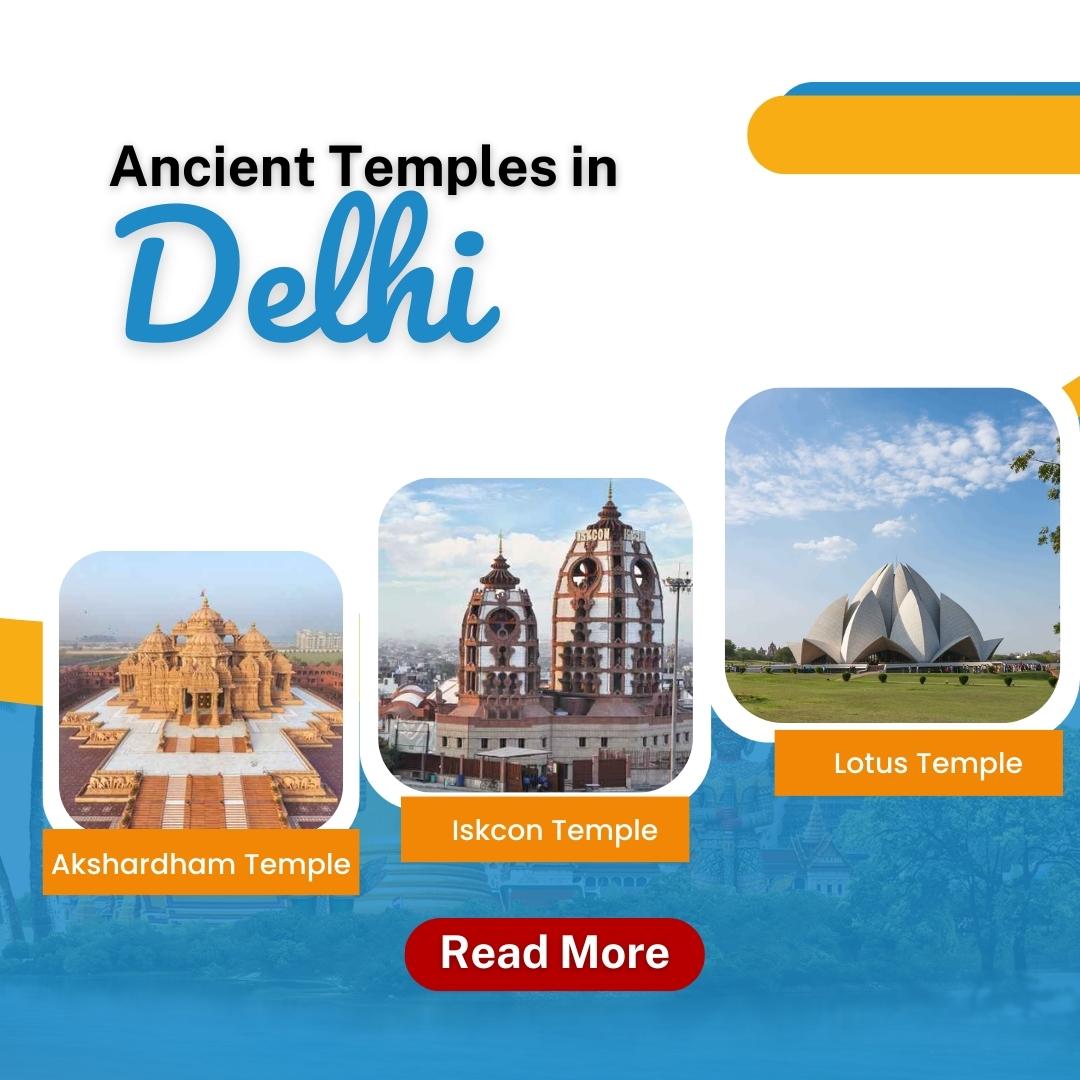
Delhi, the vibrant capital of India, is a melting pot of cultures, traditions, and religions. The city’s ancient temples, in particular, serve as a testament to its rich spiritual heritage and architectural brilliance. This article will take you on a journey through three of Delhi’s most iconic ancient temples, shedding light on their history, architectural features, and visiting information. Lets Explore Ancient Temples in Delhi.
Akshardham Temple in Delhi
Historical background and Significance of Akshardham Temple
Inaugurated in 2005, Akshardham Temple is dedicated to Lord Swaminarayan and stands as a modern marvel of Indian culture and spirituality. The temple complex, built by the Bochasanwasi Akshar Purushottam Swaminarayan Sanstha (BAPS), showcases the rich heritage of India’s ancient art, wisdom, and values.

Unique architectural features and craftsmanship
Akshardham Temple is an architectural masterpiece, featuring intricately carved sandstone and marble. The central monument, adorned with stunning sculptures of deities, flora, and fauna, boasts a breathtaking blend of traditional Indian and contemporary design elements. The temple complex also houses beautiful gardens, a cultural boat ride, and an exhibition on Indian history and culture.
Visiting information: Timings, entry fee, and tips
The temple is open from Tuesday to Sunday, with free entry for all visitors. However, please note that photography and mobile phones are not allowed inside the temple premises. It is advisable to set aside at least half a day to explore the temple complex and its various attractions.
Lotus Temple in Delhi
Historical Background and Significance of Lotus Temple
Completed in 1986, the Lotus Temple is a Bahá’í House of Worship, welcoming people of all faiths to pray and meditate. Its unique design, shaped like a lotus flower, symbolizes purity, beauty, and unity, reflecting the core principles of the Bahá’í Faith.

Distinctive architectural design and symbolism
The Lotus Temple’s striking architecture features 27 marble-clad petals, arranged in clusters to create the appearance of a blooming lotus. The temple is surrounded by lush gardens and pools, enhancing its serene ambiance. The interior, with its simple yet elegant design, provides a peaceful space for quiet reflection and prayer.
Visiting information: Timings, entry fee, and tips
The Lotus Temple is open from Tuesday to Sunday and is free to enter. Visitors are requested to maintain silence inside the prayer hall and dress modestly in respect of the temple’s sanctity. Guided tours are available to learn more about the temple’s history and the Bahá’í Faith.
Iskcon Temple in Delhi
Historical background and Significance of Iskcon Temple
The Iskcon Temple, also known as the Hare Krishna Temple, was established in 1998 by the International Society for Krishna Consciousness (ISKCON). Dedicated to Lord Krishna and Radharani, the temple aims to promote spiritual education and Vedic culture.

Beautiful architecture and spiritual atmosphere
The Iskcon Temple boasts an elegant blend of traditional and contemporary architectural styles. The temple’s vibrant atmosphere, with its daily devotional programs, mesmerizing aartis, and melodious kirtans, attracts thousands of visitors seeking spiritual solace and rejuvenation.
Visiting information: Timings, entry fee, and tips
The Iskcon Temple is open daily, with free entry for all visitors. Photography is permitted within the temple premises, and visitors are encouraged to participate in the temple’s various cultural and spiritual activities.
Tips for visiting ancient temples in Delhi
Best time to visit
The ideal time to visit Delhi’s ancient temples is during the cooler months of October to March when the weather is pleasant and perfect for sightseeing.
Local etiquette and customs
When visiting these sacred sites, it is important to dress modestly and respect the customs and traditions associated with each temple. It’s also a good idea to remove your shoes and cover your head, if required, before entering any religious place.
Participating in cultural and spiritual activities
Many temples offer various cultural and spiritual activities, such as attending prayer ceremonies, participating in kirtans, and engaging with the local community. These experiences can provide a deeper understanding of the temple’s significance and the associated religious practices.
Conclusion
The ancient temples of Delhi offer a unique blend of spirituality, architectural splendor, and cultural heritage. Each temple has its own distinct charm and allure, providing visitors with a glimpse into India’s rich religious history and traditions. As you explore these magnificent landmarks, take a moment to appreciate their beauty and the spiritual connection they offer, allowing you to immerse yourself in the captivating tapestry of Delhi’s sacred heritage.














